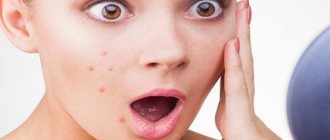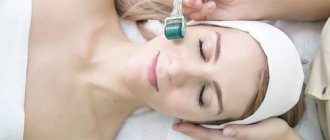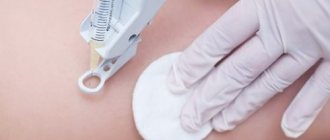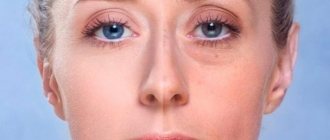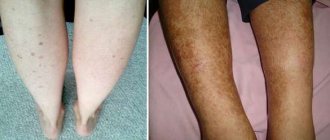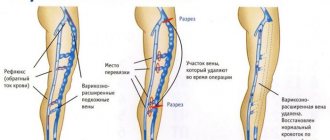Puva therapy is a fairly effective method of treating psoriasis. This is a method of irradiating affected areas of the skin, known since 1978. So, if you have been suffering from this disease for a long time and do not know how to help yourself, try puva therapy.
Today, when the world is oversaturated with all sorts of artificial substances, this method of combating various skin diseases is acceptable. And it’s not surprising, because puva therapy is the interaction of ultraviolet rays and healing substances of plant origin.
The essence of using Puva therapy
PUVA (Puva) - the name of this physiotherapeutic procedure, arose from the words Psoralens and UltraViolet A. It was invented more than forty years ago and is now actively used not only for the treatment of psoriasis, but also mycosis fungoides, atopic dermatitis, vitiligo and other dermatological disorders. Indeed, in 80-85% of cases, treatment with puva therapy helps.
Irradiation is carried out in medical institutions (clinic, dispensary or special centers), regardless of the patient’s work schedule or employment. You do not need to go to the hospital for the procedure; you just need to come to see the doctor at the appointed time.
The essence of using Puva therapy involves taking photosensitizing drugs followed by exposure to ultraviolet light on problem areas of the skin. The initial procedure only takes a few minutes. In subsequent “ultra-attacks”, at the discretion of the attending physician, the time may be slightly increased.
It happens that in order to achieve a more effective effect, the patient is prescribed a combined technique. That is, the whole body is irradiated, adding several sessions to the most affected areas. The dose of light therapy is selected for each patient, it depends on:
- the type of skin that will be susceptible to ultraviolet radiation;
- the result of increased irradiation of the most affected areas of the skin (from 2 cm or more). If 2-4 days after Puva therapy does not cause a strong reaction (redness or pigmentation), at the discretion of the doctor, the dose for treatment may be reduced by half.
And yet, after the end of light therapy and oral administration of the drug Psoralen, the patient is recommended to wear sunglasses for a day or two, which will help prevent the development of cataracts.
Pros and cons of photochemotherapy
The absolute disadvantages of this procedure include the fact that it does not help in one session. You have to visit a medical facility for several weeks, and in difficult cases even months. A negative point is that almost everyone who has undergone photochemotherapy suffers from side effects such as itching, nausea, and erythema.
However, there are an order of magnitude more positive aspects, since FHT:
- Well tolerated, unlike some other treatments in dermatology.
- Progress is usually noticeable after 3-5 sessions.
- Almost 85% of those who completed the course experience complete cleansing of the skin.
- Long period of remission. The need for a repeat course arises only after a few years. The lowest threshold for remission is six months.
- Even with repeated therapy there is no addiction, which ensures excellent effectiveness.
- Treatment procedures are carried out on an outpatient basis; there is no need to take out sick leave.
How it works
When irradiated with ultraviolet light, it reduces inflammation at the site of the lesion, has an antibacterial and immunomodulatory effect and promotes the regeneration of damaged epidermal cells.
But ultraviolet rays themselves are not that effective. Therefore, they are combined with oral medication, which only increases the effectiveness of long-wave UV rays.
Puva therapy for the treatment of psoriasis mainly uses herbal preparations, known medically as psoralens and methoxypsoralens. They are well tolerated by patients, absorbed and excreted within 12-24 hours.
PUVA therapy increases skin sensitivity and resistance to the formation of new psoriatic rashes. This is achieved by the fact that photosensitizing drugs inhibit DNA synthesis in epidermal cells and block their mitotic division.
Irradiation equipment
Puva therapy for psoriasis involves the use of certain settings. Various PUVA devices are used to carry out a complex of photochemotherapeutic procedures. They provide the necessary long-wave ultraviolet radiation.
Modern radiation rooms are mainly equipped with booths or screens with built-in fluorescent lamps that affect the entire body. There are also devices for topical use, when specific areas need to be exposed to UV radiation, for example, the palm or both, the inside of the foot, elbow, knee or scalp.
Other methods of photochemotherapy
What it is - PUVA therapy, indications, contraindications, possible side effects and complications - all this is already clear. But are there other safer methods of photochemotherapy?
Exist:
- BUF phototherapy. In this case, medications are not used; treatment can be carried out both in the clinic and at home.
- Selective phototherapy. Medium wave ultraviolet rays are used.
- PUVB therapy. Ultraviolet-A and ultraviolet-B are used. The disadvantage of this method is that the penetration into the skin cells is not deep enough.
- Re-PUVA therapy. This is a combination of PUVA therapy with retinoids. At the same time, the dose of ultraviolet radiation is reduced. In addition, the skin cleansing time is reduced by almost half. This technique is good for mycosis fungoides.
Most used treatments
The use of puva therapy involves only three types:
- systemic (general) - the most applicable procedure, which involves taking tablets followed (after 2-3.5 hours) by UV irradiation;
- local or topical - the effect is only on the affected area of the skin and involves the application of a photosensitizing cream or emulsion with further dosed exposure to ultraviolet radiation;
- puva baths are also a type of therapy and involve taking a bath with psoralen, which must first be dissolved in water.
Most popular: The benefits of organic silicon for beauty and health
Photosensitizers, that is, psoralens, are also divided into groups. To treat skin diseases, in particular psoriasis, the following types are used:
- natural - those made from plant materials, for example, citrus fruits, umbrella or legume plants. For example, the domestic drug is Ammifurin. Or Methoxsalen, an imported medicine widely used for puva treatment;
- synthetic - chemical drugs such as Trimethylpsoralen, which are also used for other skin diseases (vitiligo or dermatitis). But remember, they are used only as prescribed by a doctor, who calculates the dose depending on the patient’s body weight and recommends taking them internally or externally.
Where in Russia can you get this treatment?
In megacities, there is no problem with obtaining FHT services, since there are several centers where you can contact with your problem. Despite the fact that even the advanced method of PUVA baths has been actively used for at least a decade, people still cannot receive this service in some cities.
But now photochemotherapy is becoming an increasingly popular method of treatment, which makes it easier for patients to access, as more and more clinics offer this procedure. More and more public hospitals are being equipped with the necessary equipment and medications, so to receive this type of treatment it is often enough to go to the nearest clinic.
PUVA therapy and Phototherapy for psoriasis are discussed in the video below:
The Superiority of PUVA Therapy
People who have undergone photochemotherapy to treat psoriatic rashes report:
- Quick effect - suppression of the formation of new rashes and regression of existing manifestations is already noticeable in the 3rd or 5th procedure;
- High quality - patients experience complete cleansing of problem areas of the skin, while all others experience significant improvement;
- Puva therapy has excellent tolerability;
- Reduction of relapses - after PUVA sessions, long-term remission is maintained (from six months to several years);
- Lack of addiction, which makes the therapy method more effective;
- Outpatient treatment without interruption from work or study (for an hour, you can always leave for another);
- Aesthetics - after completing a course of photochemotherapy, a beautiful, uniform tan remains;
- Practicality - maintenance radiation sessions can always be carried out.
How to reduce the likelihood of nausea after the procedure
Nausea is a very strong and unpleasant side effect of PUVA, which can be avoided (or its symptoms significantly reduced) if you follow simple recommendations from specialists.
- Psoralen should not be taken on an empty stomach. It is best to take drugs from this group simultaneously with cereal products or milk.
- If the nausea after the procedure is too severe, the session must be rescheduled for the second half of the day.
- Dividing the dose into two doses with an interval of 30 minutes helps.
- The use of domperidone-based prokinetics (Motilak, Motilium) is acceptable.
Motilium will help cope with nausea
In cases of severely controlled nausea, a reduction in the dose of psoralen and an increase in the dosage of UVA is indicated.
PUVA therapy is an effective, safe (when used correctly) and patient-friendly method for treating inflammatory skin pathologies. It is impossible to completely get rid of rashes using this method, but a full course significantly reduces the external manifestations of the disease and, with properly selected complex treatment, prolongs the period of remission, increasing the patient’s quality of life.
Disadvantages of the technique
There are several “disadvantages”, which are:
multiple visits to the Puva office - the disease cannot be eradicated in one procedure; negative side effects - the skin is too sensitive and tender, it can become very red. Patients taking photosensitizing drugs by mouth may experience:
- nausea with vomiting;
- refusal to eat;
- abdominal discomfort;
- severe itching of the skin;
- allergic rashes;
- dizziness and severe pain;
- insomnia;
- signs of hypotension;
- Puva therapy provokes depression.
Most of these unpleasant side symptoms occur in only 10-15% of people treated with Puva therapy. Again, depending on the characteristics of the body. Such side effects do not last long and do not require any additional treatment at all, as they disappear on their own. And to alleviate such conditions, doctors recommend:
- drink psoralens with milk or some other food;
- during puwa sessions, switch to fractional meals - often and a little at a time;
- divide photosensitizing tablets into several doses;
- for severe nausea, use antiemetic drugs;
- reduce the dose of herbal medicine and accordingly increase the amount of ultraviolet irradiation.
Negative reactions can also occur with external use of psoralens. After applying the cream or emulsion, the following are occasionally observed:
- excessive dry skin;
- terrible itching, burning;
- allergies in the form of dermatitis.
Similar phenomena also occur in a small number of people - only 1-20%, 2-3 days after a puva session. To eliminate them, ointments, gels and creams with a softening effect are used.
Manifestation of overdose
If large, severely itchy erythema with blisters and unbearable pain appear on the body after the first or subsequent procedures, then this indicates an incorrect prescription. That is, either the doctor chose the wrong dosage of the medicine and radiation, or the technique is generally contraindicated for you.
Most Popular: Selecting the Best Drugstore Creams for Dry Skin
In this case, undesirable consequences include:
- increased pigmentation - pronounced spots;
- burns;
- keratitis;
- increased burning and itching;
- premature aging of the skin (manifested by the appearance of wrinkles, sagging);
- conjunctivitis or cataracts;
- oncological manifestations - skin cancer in the form of carcinoma or melanoma.
Fortunately, these are very rare manifestations, to avoid which, all patients undergoing Puva therapy are required to undergo additional annual examination. To prevent cancer, all the most vulnerable areas are covered with protective devices, unless there are psoriatic rashes there.
Indications for use
With the help of PUVA therapy, diseases in the field of dermatology are treated. It is worth noting that thanks to this therapy, it became possible to cure many skin diseases that could not be cured with medications.
It is used in the presence of such ailments:
- basal cell skin cancer;
- atopic dermatitis;
- fungal mycosis;
- psoriasis;
- baldness (alopecia);
- eczema;
- lymphoma;
- ichthyosis;
- parapsoriasis;
- scleroderma;
- Bowen's disease;
- pallipomas;
- vitiligo;
- other pathologies that can be characterized as skin pathologies.
Your doctor may prescribe PUVA for any stage of the disease. PUVA is also used for cosmetic purposes. After the procedures, the skin layer improves and becomes more elastic. This happens because collagen is produced during the procedure.
Contraindications
The prohibition for treatment with the RUVA technique is the presence of the following conditions:
- hypersensitivity to psoralens and UV rays;
- hyperreaction to light (observed in some diseases, such as lupus);
- malignant skin manifestations;
- ophthalmological defects and pregnancy.
Puva therapy is not prescribed to patients with psoriasis with severe cardiovascular diseases, when the patient cannot stand in a UV cabin for a long time.
PUVA dosing
The frequency of sessions is also assigned based on the characteristics of the person. Basically, the course includes 10 or in severe cases 30 procedures, which are important to attend 3-4 times a week, that is, every other day. At the discretion of the doctor, preventive phytochemical treatment may additionally be used, when the dosage of medications and visits is gradually reduced.
When ultraviolet light is prohibited
PUVA therapy procedures are not prescribed:
- patients with hypersensitivity to photoactive substances;
- in case of detected malignant tumors;
- during pregnancy and lactation.
Contraindications are diagnosed diseases that provoke increased sensitivity to light (lupus erythematosus, albinism, porphyria). The list is complemented by aphakia (absence of the lens), since there is a risk of damage to the retina of the eyeball. Patients with fair skin are at risk . The following pathological conditions of the body can lead to undesirable consequences:
- severe renal failure;
- cataract;
- dysfunction of the heart muscle;
- oncological diseases;
- uremia;
- exposure to ionizing radiation.
Herbal bathing
It is worth mentioning the use of puva baths - an advanced treatment method for psoriasis and many other dermatological diseases in leading European clinics. There, the use of photochemotherapy in water is an effective method, which consists of a 15-minute immersion in psoralents dissolved in water, followed by long-wave ultraviolet radiation.
In our country, herbal bathing has been practiced for about 10 years. This method is prescribed to patients whose body does not accept the use of photosensitizing tablets. The technique is actively used to treat children with psoriasis and under 15 years of age. Puva baths are well tolerated by patients and do not cause unwanted side effects. In addition, they can also be used locally - immerse the foot or elbow in a water-psoral solution.
Typically, doctors prescribe 15-20 sessions for therapeutic effect. In advanced cases, their number is increased to 30-40.
PUVA at home
Photochemotherapy for simple and minor skin lesions can be carried out at home. There are special ultraviolet irradiators for this purpose. They are easy to operate and do not require much effort. The only thing is that you still have to go to the doctor, as he will be able to prescribe the required dosage of concomitant medications. However, these procedures are best carried out under the supervision of a medical professional.
